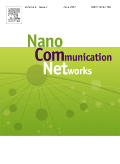
Nano Communication Networks
Scope & Guideline
Exploring the Frontiers of Applied Mathematics and Networks
Introduction
Aims and Scopes
- Molecular Communication Systems:
Research on molecular communication focuses on the principles and designs of communication systems that utilize molecules as information carriers, exploring diffusion-based methods, error correction, and detection techniques. - Terahertz Communications:
This area investigates the use of terahertz frequencies for high-speed communication, including channel modeling, antenna design, and the development of novel materials to enhance transmission performance. - Quantum-dot Cellular Automata (QCA):
QCA is a key focus, with studies aimed at developing fault-tolerant circuits and architectures using quantum-dot technology, promoting advancements in nanoscale computing and communication. - Nano-scale Network Design and Protocols:
The journal covers the design and analysis of networks at the nanoscale, including routing protocols, network architectures, and the integration of energy-efficient communication methods. - Advanced Antenna Technologies:
Research on the design and modeling of innovative antennas for nano-communications, particularly in the terahertz regime, emphasizing performance optimization and application in various domains.
Trending and Emerging
- Deep Learning in Communication Systems:
There is a notable increase in the application of deep learning techniques for modeling and optimizing communication systems, particularly in molecular communication, indicating a trend towards data-driven methodologies. - Energy-Efficient Communication Protocols:
Research focused on energy-aware designs and protocols, particularly for nanoscale networks and molecular communications, is gaining traction as the need for sustainable technology grows. - Integration of Novel Materials:
The exploration of new materials, such as graphene and metamaterials, for enhancing communication system performance is a prominent trend, showcasing the importance of material science in nano-communications. - Interdisciplinary Applications:
Emerging studies are increasingly integrating nano-communication technologies with biomedical applications, such as targeted drug delivery and biosensing, highlighting the interdisciplinary nature of current research. - Fault-Tolerant Architectures:
The development of fault-tolerant designs, particularly in QCA and molecular networks, is an emerging scope reflecting the need for reliable communication in challenging environments.
Declining or Waning
- Classical Electromagnetic Theories:
Research themes that rely heavily on classical electromagnetic theories have seen a reduction in new contributions, likely due to the shift towards more advanced and application-specific approaches in nano-communication. - Basic Network Topologies:
Studies focusing solely on basic network topologies without innovative applications or enhancements are becoming less frequent, as the field moves towards more complex and adaptive network solutions. - Single-Application Communication Models:
Papers that discuss communication models limited to single applications (e.g., only drug delivery) are decreasing, indicating a trend towards multi-functional and integrated communication systems.
Similar Journals
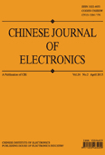
CHINESE JOURNAL OF ELECTRONICS
Pioneering Knowledge in Applied Engineering FieldsThe CHINESE JOURNAL OF ELECTRONICS is a distinguished peer-reviewed publication in the fields of electrical and electronic engineering and applied mathematics, published by the reputable IEEE-Institute of Electrical and Electronics Engineers Inc. Based in the United States, this journal has been a significant platform for sharing innovative research since its inception in 1996. With a commendable impact factor, it is ranked Q3 in both applied mathematics and electrical engineering categories, reflecting its relevance and quality within the academic community. The journal aims to disseminate high-quality research, foster interdisciplinary approaches, and provide a forum for discussions on advancements and applications in electronics and associated fields. Although it currently does not offer open access, the CHINESE JOURNAL OF ELECTRONICS remains a key resource for researchers, professionals, and students seeking to stay at the forefront of technological developments. Its Scopus rankings—170th in applied mathematics and 365th in electrical engineering—highlight its credibility and importance in advancing knowledge and innovation.
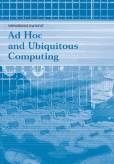
International Journal of Ad Hoc and Ubiquitous Computing
Advancing the Frontiers of Computing InnovationThe International Journal of Ad Hoc and Ubiquitous Computing, published by InderScience Enterprises Ltd, is a premier platform dedicated to advancing the fields of computer networks, communication systems, hardware, and software architecture. Since its inception in 2005, this journal has served as a critical resource for researchers, professionals, and students aiming to explore the intricate dynamics of ubiquitous computing and ad hoc networks. Though currently not an open-access journal, its scholarly contributions are well-recognized, as evidenced by its rank in the Scopus database, which places it within the lower quartiles of its respective categories. With an increasing focus on innovative solutions in computer science, the journal aims to facilitate knowledge dissemination and encourage interdisciplinary collaborations. Researchers are particularly drawn to the journal for its comprehensive coverage of emerging technologies, making it an invaluable asset in a world increasingly reliant on sophisticated communication infrastructures. As it continues to thrive towards 2024, the journal remains committed to fostering a vibrant academic community.
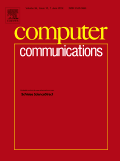
COMPUTER COMMUNICATIONS
Unveiling Insights in Cutting-Edge CommunicationsCOMPUTER COMMUNICATIONS is a premier journal published by Elsevier, covering cutting-edge research in the field of computer networks and communications. With an impressive 2023 Scopus ranking placing it in the 95th percentile and classified as Q1 in its category, this journal embodies the forefront of technological advancement and scholarly excellence. Since its inception in 1978 and poised to continue until 2024, COMPUTER COMMUNICATIONS serves as an essential platform for disseminating high-impact research that advances our understanding of computer networking protocols, architectures, and applications. Although it is not an open-access publication, the journal provides various access options to ensure that its findings are widely circulated among researchers, professionals, and students. Through rigorous peer review and a commitment to fostering innovation, COMPUTER COMMUNICATIONS plays a vital role in shaping the future of communication technologies.
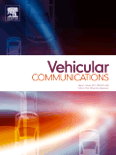
Vehicular Communications
Driving Innovations in Vehicular CommunicationVehicular Communications is a leading academic journal dedicated to the field of automotive engineering, communication, and electrical and electronic engineering, published by Elsevier. With an impressive impact factor and classification in the Q1 quartile for 2023 across three critical categories, this journal ranks among the top scholarly platforms, especially in automotive engineering and communication disciplines. With a focus on the latest innovations and technologies pertaining to vehicular communication systems, it provides a vital forum for the dissemination of high-quality research, bridging theoretical knowledge and practical applications. Researchers, professionals, and students are encouraged to contribute to this dynamic publication, which not only highlights cutting-edge advancements but also promotes interdisciplinary collaboration in the rapidly evolving landscape of connected and autonomous vehicles. As the field continues to grow, Vehicular Communications aims to facilitate knowledge exchange and inspire future research directions through its comprehensive and accessible content.
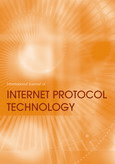
International Journal of Internet Protocol Technology
Empowering Research in Global Digital NetworksThe International Journal of Internet Protocol Technology (ISSN: 1743-8209; E-ISSN: 1743-8217), published by InderScience Enterprises Ltd, is an esteemed periodical dedicated to advancing research in the realms of internet protocols and communication technologies. Established in 2005 and headquartered in the United Kingdom, this journal serves as a vital platform for scholars and professionals, providing insights into innovative approaches and emerging trends within the field. With a 2023 Scopus ranking placing it in the Q4 category for Computer Networks and Communications, it continues to contribute to an evolving digital ecosystem. Although the journal does not offer open access, its articles are accessible through institutional subscriptions and provide a wealth of knowledge that aids the understanding and development of internet protocols. Researchers, practitioners, and students will find a range of high-quality studies that explore critical issues and technological advancements shaping global digital communications.
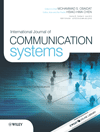
INTERNATIONAL JOURNAL OF COMMUNICATION SYSTEMS
Unveiling Breakthroughs in Signal Processing and NetworksInternational Journal of Communication Systems, published by Wiley, is a premier scholarly publication dedicated to advancing the field of communication systems and network engineering. With an ISSN of 1074-5351 and E-ISSN 1099-1131, this journal has emerged as a critical resource for researchers and professionals alike, showcasing innovative research from 1994 to 2024. Holding a distinguished Q2 quartile ranking in both Computer Networks and Communications and Electrical and Electronic Engineering, it ranks within the top tiers of its field, reflecting its high impact and relevance. The journal's focus spans a wide range of topics within these disciplines, including but not limited to, advanced communication protocols, network design, signal processing, and emerging technologies. Although it does not currently offer open access options, the journal remains committed to disseminating high-quality research to contribute meaningfully to the scientific community. Researchers, professionals, and students will find invaluable insights and ideas to further their work and understanding in this dynamic field.

Frontiers in Communications and Networks
Connecting Ideas, Bridging NetworksFrontiers in Communications and Networks is a prominent open-access journal published by FRONTIERS MEDIA SA, established in 2020 and positioned in the heart of Switzerland. As an interdisciplinary platform, it focuses on advancing research related to computer networks, communications, and signal processing, providing a critical forum for innovative findings and developments in these rapidly evolving fields. With an impressive Q1 ranking in Computer Networks and Communications and a Q2 ranking in Signal Processing as of 2023, this journal is highly regarded among scholars and practitioners seeking to disseminate their work to a broad audience. By offering open-access options, it ensures that the research is widely available, fostering collaboration and knowledge sharing across the globe. Researchers, professionals, and students are encouraged to engage with the journal as it aims to encapsulate the burgeoning advancements shaping our digital communication landscape.

Annals of Telecommunications
Innovating the landscape of electrical and electronic engineering.Annals of Telecommunications is a prestigious peer-reviewed journal published by SPRINGER INT PUBL AG, dedicated to advancing the field of electrical and electronic engineering. Established in 1946, this journal presents a comprehensive collection of research articles that address the latest trends and developments in telecommunications, including innovative technologies, systems, and applications. With an impressive Q2 ranking in the 2023 category of Electrical and Electronic Engineering and a Scopus rank in the 68th percentile, the journal serves as a vital platform for researchers, professionals, and students looking to disseminate groundbreaking findings and engage with contemporary challenges in the field. Although it is not an Open Access journal, it offers a wealth of knowledge that contributes to both academic and practical advancements in telecommunications. The Annals of Telecommunications remains an essential resource for anyone involved in telecommunication research and practice, fostering collaboration and knowledge exchange globally.
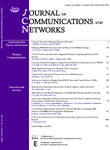
JOURNAL OF COMMUNICATIONS AND NETWORKS
Shaping Tomorrow’s Communications LandscapeJOURNAL OF COMMUNICATIONS AND NETWORKS, published by the Korean Institute of Communications Sciences (KICS), is a leading academic journal that has been at the forefront of the fields of Computer Networks and Communications as well as Information Systems since its inception in 1999. With a strong commitment to advancing research in these critical areas, this journal has achieved a prestigious Q1 ranking in both domains as of 2023, reflecting its significant impact and innovative contributions to the field. The journal features original research, review articles, and technical notes that address the latest advancements in communication technologies, network architecture, and data management strategies. As a vital resource for researchers, practitioners, and students, it not only disseminates valuable findings but also fosters collaboration and knowledge exchange among diverse disciplines within the communications landscape. With a consistent annual volume, the journal continues to shape the future of communications science and offers authors an esteemed platform to showcase their work.

Science China-Information Sciences
Pioneering Knowledge in the Evolving Landscape of Information Sciences.Science China-Information Sciences is a prestigious academic journal published by SCIENCE PRESS, dedicated to advancing knowledge in the field of information sciences and computer science. Established in China, the journal has gained a remarkable reputation, with a 2023 category quartile ranking of Q1 in Computer Science (miscellaneous) and an impressive Scopus rank of #16 out of 232 in General Computer Science, positioning it within the 93rd percentile. The journal embraces a broad spectrum of topics, from theoretical frameworks to practical applications, providing a platform for researchers, professionals, and students to disseminate their findings and engage with the latest advancements in the field. With open access options available, Science China-Information Sciences ensures that innovative research is accessible to a global audience, fostering collaboration and interdisciplinary dialogue. The journal not only reflects the evolving landscape of information sciences but also plays a pivotal role in shaping future research directions.